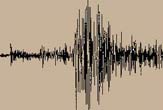Shaking Presaged Large California Earthquakes

Earthquake forecasting remains a mostly elusive pursuit, but seismologists have developed models that predict activity years in advance and also seconds before a catastrophe.
A new study indicates two large California quakes were presaged by heightened activity months in advance, offering another potential forecast technique.
Rather than finding advance rumbling at the site of a future temblor, which is where previous studies had focused, precursor activity was found along the flanks of a fault, said Valeri Korneev of the U.S. Department of Energy's Lawrence Berkeley National Laboratory.
Two case studies
One year prior to a 6.0-magnitude event in Parkfield, California in 2004, a sharp increase in seismic activity began along the flanks of the Parkfield stretch of the San Andreas Fault in Southern California, Korneev said today.
The activity peaked four to six months before the quake, then decreased as the event approached.
A similar scenario played out prior to the deadly 1989 Loma Prieta earthquake, a magnitude-7.0 event that rocked the San Francisco area and prevented the start of the third game of that year's World Series.
Get the world’s most fascinating discoveries delivered straight to your inbox.
Loma Prieta was also a San Andreas event. Korneev found that two months prior, activity increased to eight times normal levels west of the Hayward Fault zone and other areas adjacent to the ultimate epicenter. The activity subsided before the big quake struck.
"Peaks in seismic activity in the crust surrounding a fault could help signal the arrival of large earthquakes," Korneev said. "These peaks may be a good mid-term precursor and allow authorities to declare alerts several months before earthquakes."
Korneev is presenting his findings today at the American Geophysical Union's Fall meeting in San Francisco.
Other crystal balls
Other research has shown that Parkfield experiences a large earthquake every 22 years on average, though the last interval was 38 years. The San Francisco Bay Area has a 1 percent chance of a magnitude-7 or greater earthquake every year, data shows, and a 25 percent chance for one within two decades.
Such knowledge allows seismologists to make long-term predictions that can be useful to those who set building codes and plan infrastructure. But they don't help provide actual warnings.
One new project gives odds for a California quake updated hourly, based on recent seismic activity and historical data. It is for now little more than a statistical novelty, however.
Other researchers are sifting through data that might one day yield predictions of the most major quakes, such as the one last December that generated the deadly Indian Ocean tsunami. Those sorts of predictions are not yet possible though.
Among the most interesting advances in earthquake prediction was announced last month.
A seismologist in California announced the ability to predict the ultimate magnitude of an earthquake just as the shaking begins. A warning system based on this technique could provide up to 20 seconds for people to get into a protective doorway or under a desk.
Robert is an independent health and science journalist and writer based in Phoenix, Arizona. He is a former editor-in-chief of Live Science with over 20 years of experience as a reporter and editor. He has worked on websites such as Space.com and Tom's Guide, and is a contributor on Medium, covering how we age and how to optimize the mind and body through time. He has a journalism degree from Humboldt State University in California.



